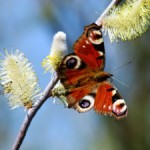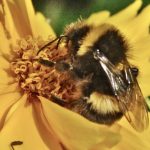Woodland web updates (3).

Big Garden Birdwatch. Once again the RSPB’s Big Garden Birdwatch is about to swing into action. This year , it will take place from the 29th to the 31st of this month. To take part, you just need to count the birds that you see in one hour. Details and guidance are available here : https://www.rspb.org.uk/get-involved/activities/birdwatch/everything-you-need-to-know-about-big-garden-birdwatch/
Butterflies (and moths). If you are interested in adding to your knowledge of wildlife, then the Butterfly Conservation people not only offer guidance on identifying moths and butterflies on their website but a number of online courses. The different sessions will focus on the identification of native and regular migrant butterflies. One session will be an Introduction to Moths. Spaces are limited and can be booked on a first-come-first-serve basis. Sessions cost £10 each.
Details to be found here : https://butterfly-conservation.org/news-and-blog/online-id-courses-for-2021. There is also a UK Moths recorders’ meeting to be held online on 30th January. “The meeting is open to anyone interested in moth recording and conservation and will be followed by a County Moth Recorder Meeting.” https://butterfly-conservation.org/moths/uk-moth-recorders-meeting. The programme for the meeting is detailed online : https://butterfly-conservation.org/node/4460
Sentient beans ? Although plants can sense and react to their environment, this does not mean that they are sentient - possessing ‘thought processes’ or ‘intelligence’. However, an experiment by Professor Paco Calvo at the University of Murcia has looked the ability of french beans to ‘sense’ structures (garden canes, in this case). He and Vicente Raja devised an experiment looking at the behaviour of potted bean plants. Some of the beans were grown near to a support pole, others were grown without one. Using time lapse photography, they analysed the subsequent dynamics of the shoots’ growth. It was concluded that the growth was more controlled and predictable when a pole was present.“ Professor Calvo has said “it’s anticipatory, goal-directed, flexible behaviour.” Details of the experiment can be found in Scientific Reports.
Neonicotinoids again. To protect bees, the EU agreed a ban on all outdoor uses of the neonicotinoid insecticides clothianidin, imidacloprid, and thiamethoxam in April 2018. However, it would appear that a number of “emergency authorisations” for outdoor use of these chemicals have been allowed. The neonicotinoids have been linked to the decline of honey bees, bumblebees and other pollinators; the pesticides affect development of the larvae (affecting the nervous system), weaken their immune systems and affect their ‘homing ability’.
It would appear that the U.K is now prepared to allow the use of the neonicotinoid thiamethoxam to treat sugar beet seed (to protect the crop from virus yellows, spread by aphids).
 Xylose is a sugar that was first isolated from wood, and hence its name. It is one of the sugars used to build the more complex molecules that make up the biomass of wood. Now scientists from the University of Bath have found a way of using wood-derived xylose to make a ‘new’ polymer that can take a crystalline / rigid form or a rubbery one. This means that it could have multiple uses from packaging to healthcare.
Xylose is a sugar that was first isolated from wood, and hence its name. It is one of the sugars used to build the more complex molecules that make up the biomass of wood. Now scientists from the University of Bath have found a way of using wood-derived xylose to make a ‘new’ polymer that can take a crystalline / rigid form or a rubbery one. This means that it could have multiple uses from packaging to healthcare.
Plastics are usually made from crude oil, which is a finite resource. Further studies will focus on biocompatibility and biodegradation of these new materials.
Comments are closed for this post.
